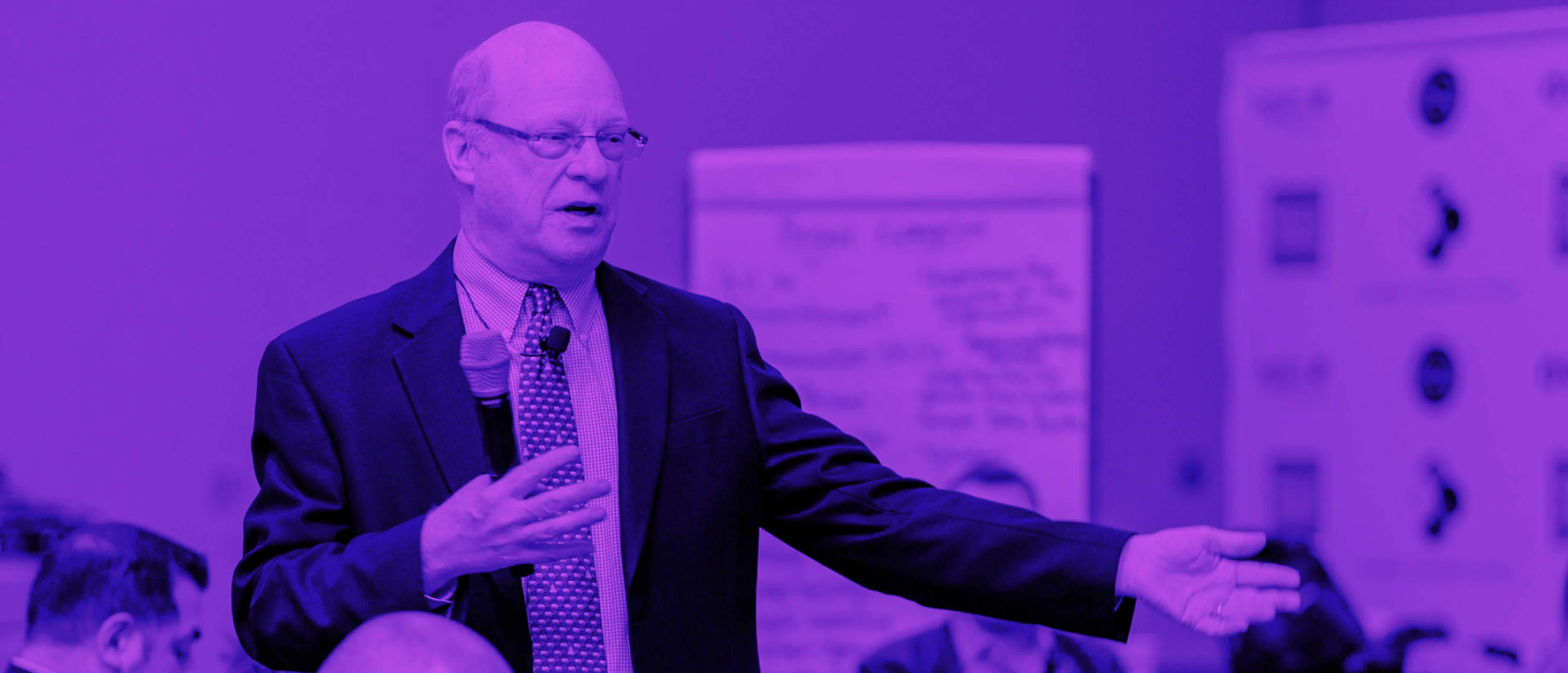Imagine a Canadian expat who moved to Texas and started a new business by faxing a five-page proposal to Chesapeake Energy. He got a yes in 15 minutes, then leveraged that success to scale his employee benefits startup into one of the nation’s fastest-growing firms. If you’re looking for real-world tactics and strategies for organizational growth, then our guest delivers exactly that and then some.
Meet Rethink Change Guest, Jim Watt, Founder and CEO of Ascendent Partners
Jim Watt, turnaround addict, “ass-bailing” specialist, and killer of the long sales cycle, is the founder and CEO of Ascendent Partners and a 35-year force in employee-benefit and insurance consulting. He built Employee Benefit Solutions, sold it to EPIC while running Southwest operations, and then led global distribution growth at Cigna. A former chair of the Worldwide Broker Network and an active Houston philanthropist, Jim turns complex benefit strategies into bottom-line advantages.
But the story behind that impressive trajectory isn’t just about big wins. It’s about the hard-won clarity that enables sustainable organizational growth. From the outside, the business looked unstoppable. Inside, though, the team was stretched thin, getting pulled in directions that didn’t always match their core strengths.
Which raised the question: Were they building the right kind of business, or just saying “yes” to the wrong opportunities?
Listen to the full story on Spotify:
Organizational Growth: How to Say No to the Wrong Business
Before they ever asked how to find the right clients, EBS had to face a harder truth: learning how to say “no” to the wrong ones.
Sure, some of them were big names with big budgets. However, they also consumed hours of staff time, pulled the team into endless firefighting, and eroded the culture Jim was trying to preserve. These weren’t necessarily bad companies, but they weren’t good fits. And if the phrase, “if it’s not helping you, then it’s harming you,” has any weight to it, EBS was getting pulled under. Chasing revenue at the cost of morale was no longer sustainable.
So the company took a beat. They dug into the numbers. They asked which clients were profitable once they factored in support, time, and delivery drag. They discovered which ones led to team wins and which ones left their team feeling frustrated, demoralized, or burned out.
It became clear that the accounts that looked great on paper were often the ones quietly draining the business. So, they had to let them go. As challenging as it was, it was a necessary decision that, with time, propelled their business forward.
This decision wasn’t rash or impulsive; it was deliberate, designed to protect the team and make space for healthier organizational growth.
Once the wrong-fit clients were out, everything changed. The work felt more meaningful. The team had more capacity. And they could finally build around shared values instead of constantly engaging in damage control.
Saying no became the first step to saying yes to better-fit opportunities.
Are Your Clients the Right Fit? 3 Questions to Consider
Somewhere along the way, Jim realized the sales cycle wasn’t the problem. The wrong sales cycle was. The goal wasn’t just to sell more; it was about selling smarter.
The EBS team had been chasing leads, closing deals, and growing quickly, but not always in the right direction. The misalignment was revealed late, after contracts had been signed and teams were already knee-deep in delivery. Projects dragged. Scopes ballooned. Everyone felt stuck.
But they didn’t need more sales training. They needed a better filter.
Once they were able to let go of the clients that had once pulled them under, they were able to focus on the clients that could pull them out of deep waters.
So they asked themselves what the right clients had in common. The ones that turned into real partnerships. The ones who came back year after year and respected the value of the work. Turns out, three early signals made all the difference:
Was the HR leader a true professional with the authority to act?
Did the CEO have a clear vision for growth and direction?
And was the company going through some kind of meaningful transition?
If the answer to those three questions was “yes,” the odds were high that the relationship would be a win for both sides.
It’s important to remember that selling services in a complex industry takes time, talent, and trust. That trust breaks fast when you’re misaligned from day one. And Jim had no interest in burning out good people to prop up bad client fits.
By qualifying more intentionally, EBS turned the sales process into a strategic advantage. They weren’t just growing revenue; they were fueling organizational growth that could last. And they had the energy to show up fully for the clients who truly wanted them there.
Are You Building a Team That Actually Works Together?
It’s easy to talk about culture. It’s harder to protect it when you’re in growth mode. EBS learned that lesson firsthand, especially when it came to hiring. It’s one thing to find the right clients and establish an efficient sales strategy, but it’s another thing entirely to find the right people to deliver on that promise day in and day out.
As the company scaled, it became clear that talent alone wasn’t enough. They needed people who could collaborate, communicate effectively, and be reliable team members, not just task-oriented individuals. Culture quickly became something they had to actively defend in every hiring decision.
With this, Jim began to notice that some employees worked like jet fuel, while others left a trail of friction. Lone wolves might’ve been top performers on paper, but they left the pack scattered.
EBS needed collaborators. People who could take ownership without taking all the oxygen in the room. So they got serious about who they were letting in. Interviews changed. Expectations got clearer. And they started screening not just for talent, but for temperament.
Scaling from 30 to 160 people wasn’t just about adding headcount. It was about intentional organizational growth, preserving a culture that made the pursuit of growth worthwhile.
If you’re focusing on organizational growth within your company, just know that you can always teach skills, but you can’t teach character. You can hire all the A+ players in the world, but if they all have C- attitudes, they will destroy the company from the inside out.
Subscribe to Rethink Change for More Great Content Like This!
Not quite ready to take the leap for your company, but want to learn more from our podcast guests? Be sure to subscribe to Rethink Change, where innovators and disruptors go for clarity.
This show is hosted by CEO Ward Pennebaker and President Matt Pennebaker, who deliver sharp insights from battle-tested leaders who have navigated chaos and turned challenges into momentum.
You’ll hear from executives from startups to global behemoths from a wide range of industries. No fluff. All results. These conversations reveal what works, enabling you to think differently and act smarter.



